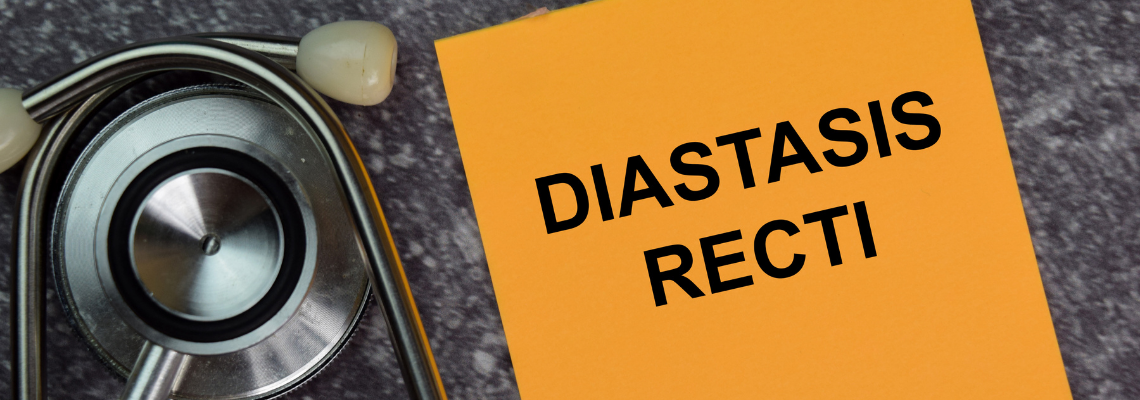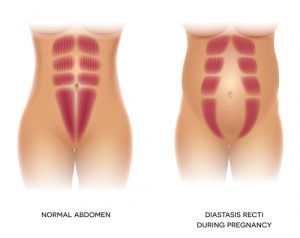
Diastasis recti is a rarely talked about but common problem for women who are pregnant or who have recently given birth. A partial or complete separation of the “six-pack” abdominal muscles, or rectus abdominis, this condition can be uncomfortable and sometimes even painful. According to Healthline, up to sixty percent of women will suffer either pre- or postpartum diastasis recti.
Symptoms of Diastasis Recti
A bulge in your stomach when you strain your abdominal muscles signifies that you may have a partial or even complete separation of the rectus abdominis. Lower back pain, constipation, bloating and poor posture are also common symptoms of this ailment.
Causes of Diastasis Recti
Separation of the rectus abdominis is caused by excessive internal abdominal pressure. Anyone, including men and newborns, can suffer this injury, though women who are pregnant or who’ve recently given birth are at a higher risk. This is due to the stretching of muscles and connective tissue as the uterus expands. Pushing during delivery can cause or exacerbate diastasis recti. In fact, most women who give birth will experience at least some separation of the rectus abdominis.
Premature babies are also at high risk for abdominal separation, as their musculature and connective tissue are not yet fully developed. In most cases of abdominal separation in premature babies, the condition will heal itself in time.
How Is Diastasis Recti Treated?
 The first step in treating an abdominal muscle separation is to keep the problem from becoming worse. People suffering from diastasis recti should avoid any activity that strains the abdominal muscles, including, of course, heavy lifting.
The first step in treating an abdominal muscle separation is to keep the problem from becoming worse. People suffering from diastasis recti should avoid any activity that strains the abdominal muscles, including, of course, heavy lifting.
Practicing good posture is another way to ensure you don’t exacerbate your separated abdominals. Supporting your lower back with a rolled-up towel or pillow while sitting is also recommended, as is using care when getting out of bed. Rather than sitting up in bed, roll over onto your side and support yourself on your arm as you rise. Some people may choose, or be required by their doctor, to wear a brace or binder for additional support.
An abdominal separation will often correct itself if the rectus abdominis muscles are rested and adequately supported. If you’re still experiencing symptoms of abdominal muscle separation eight weeks after giving birth, your doctor may recommend exercises for the pelvic floor and deep stomach.
According to WebMD, the Tupler technique has proven successful in treating the condition. The technique involves performing targeted exercises while wearing a splint for abdominal support.
If your doctor is unable to recommend exercises specifically for diastasis recti, consult a physical therapist who specializes in postpartum recovery. Always consult with your doctor before beginning any exercise program meant to treat diastasis recti.
When abdominal separation doesn’t heal on its own or with the proper exercises, surgery can correct the problem. Some women choose to have abdominal repair surgery for cosmetic reasons as well.
The best way to minimize your chances of experiencing significant diastasis recti during or after pregnancy is to strengthen your core well before delivery and, ideally, before becoming pregnant. If you are experiencing any symptoms of abdominal muscle separation, cease all strenuous exercise until you’ve consulted your doctor.


